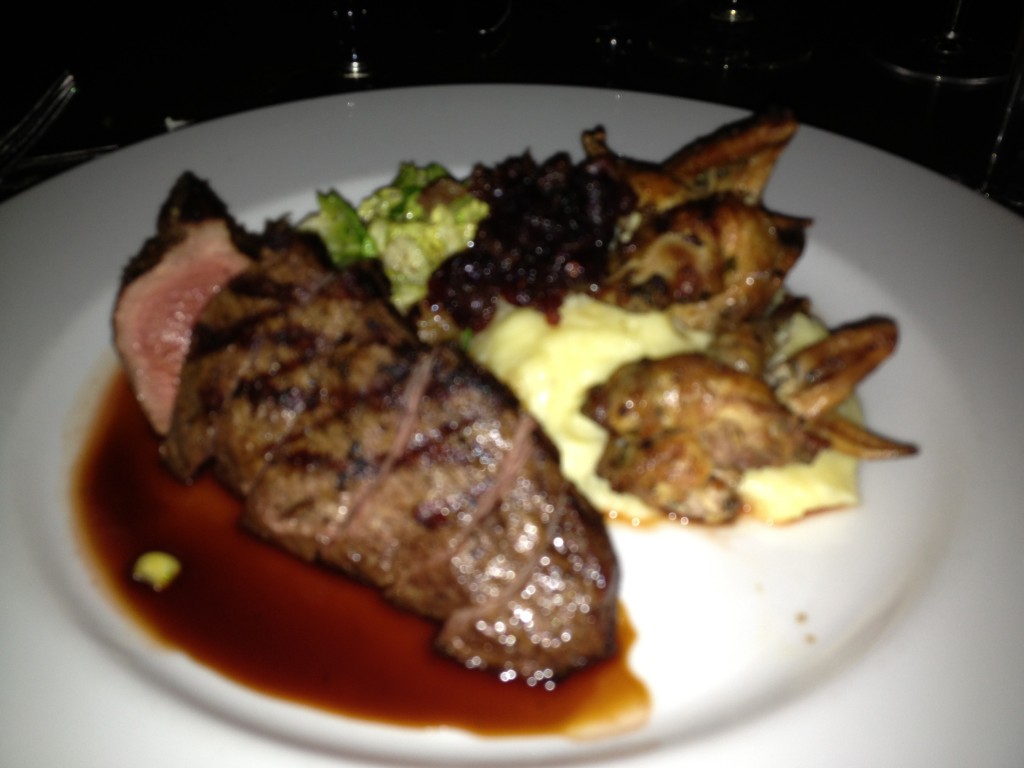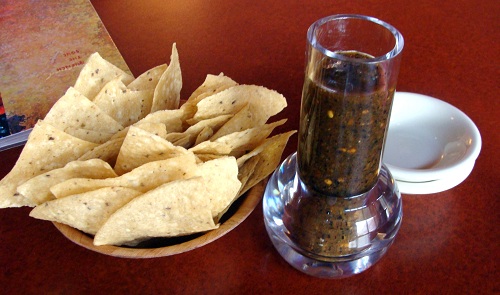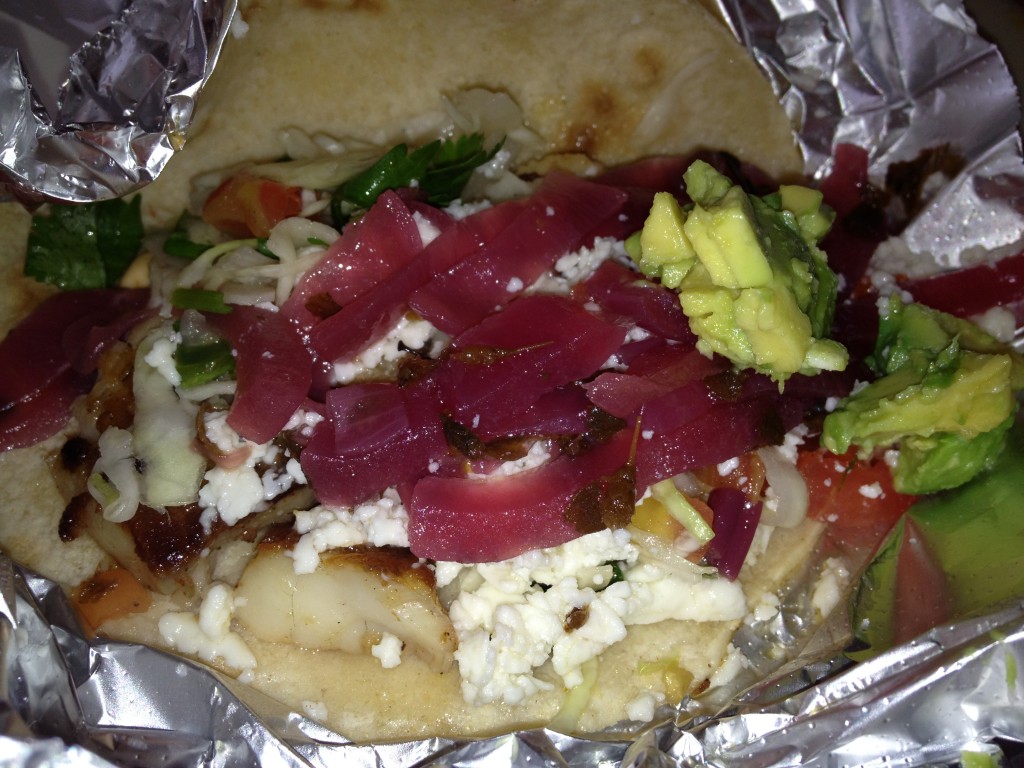While history has never been my favorite subject, when it relates to food my interest is piqued. Like most people, when I think of San Antonio, I remember the Alamo. But to me, the history of the Alamo has more to do with a couple of challenges on “Top Chef Texas” than the actual battle that took place there in 1836. Pathetic, I know. But Pee Wee Herman at the Alamo simply resonates with me more than a Texan commander named William B. Travis.
Spending five days in San Antonio for a conference means continuous consumption of Tex-Mex cuisine. I am deliriously happy at the thought of non-stop feasting on guacamole, salsa, chips, and beans.
Here is a bit of history about Tex-Mex food:
Mexican restaurants, who’s popularity coincided with the arrival of large numbers of Mexican immigrants after 1950, have for the most part followed the form and style of what is called “Tex-Mex” food, an amalgam of Northern Mexican peasant food with Texas farm and cowboy fare. Chili, which some consider Texas’s state dish, was unknown in Mexico and derived from the ample use of beef in Texan cooking. “Refried beans” are a mistranslation of the Mexican dish frijoles refritos, which actually means well-fried beans…The combination platter of enchiladas, tacos, and tortillas became the unvarying standards of the Tex-Mex menu, while new dishes like chimichangas (supposedly invented in the the 1950s at El Charro restaurant in Tucson, Arizona) and nachos (supposedly first served at a consession at Dallas’s State Fair of Texas in 1964…) were concocted to please the American palate….Only in the last decade has refined, regional Mexican food taken a foot-hold in American cities, reflecting not only the tenets of Tex-Mex cookery by the cuisines of Mexico City, the Yucatan, and other regions with long-standing culinary traditions.”
—America Eats Out, John Mariani [William Morrow:New York] 1991 (p. 80-1)
Mi Tierra, which has been serving Tex Mex cuisine in San Antonio since 1941, is the first stop on my dining itinerary. As described on the website: open 24 hours a day and festooned with Christmas lights year round, Mi Tierra is a little loco and a lot of fun. My group of ten is seated in the back room which is adorned with a 70-foot mural portraying famous Latinos including Cesar Chavez, Frida Kahlo, and Selena Gomez. Our server points out some of the luminaries in the mural and describes the history of the restaurant. I don’t really mind a history lesson that’s accompanied by a margarita.

This photo of Mi Tierra Cafe & Bakery is courtesy of TripAdvisor
I have a dish called Michoacan, which is baked pork tips marinated with oranges and spices and served with guacamole, Spanish rice, and refried beans. This is night one, so I dig in to my meal with gusto. The guacamole is appropriately zesty, but I find the pork to be dry. Most of us agree that the fare is comparable to anything we can get back home. But the atmosphere is one-of-a kind. I am completely enamored of the bakery at the front of the restaurant. Too stuffed to sample anything after dinner, I take a few baked goods to go. The candied pumpkin is particularly delicioso. Mi Tierra is campy and touristy, and the food doesn’t exactly set the world on fire. But it’s a unique experience, and if you can accept it for what it is, it’s worth a visit.
 This photo of Mi Tierra Cafe & Bakery is courtesy of TripAdvisor
This photo of Mi Tierra Cafe & Bakery is courtesy of TripAdvisor
A large group dinner has been planned at Biga on the Banks, which features creative New American cuisine. No chips and salsa here. Chef Bruce Auden is a seven time James Beard Award nominee for best chef Southwest. Our enthusiastic server steers me to a highly-lauded antelope and quail dish adorned with parsnip puree, chestnuts, Brussels sprouts, cranberry raisin chutney, and juniper sauce. Someone at the table tells me that she had antelope years ago and found it fairly distasteful, but I fail to heed the warning. I should have listened. I don’t care for the flavor of the meat. It’s not gamey, but there is an odd aftertaste. When I am asked how I like my dish, I don’t comment on the antelope but I do remark that the quail is overcooked and tasteless. The quail is whisked away and I am brought another serving, which is much better. I’m still left disappointed in my food, but others are impressed by a lamb dish and some of the seafood offerings.
We also dine at Boudro’s which has a lovely off-site room for large groups. My favorite part of the meal is a wonderfully chunky guacamole, prepared table side.
Day five offers one final dining opportunity. I am ready to try something more authentic, preferably away from the tourist-filled River Walk area. Rosario’s has been recommended by a coworker who originally hails from Texas, which gives her instant credibility. Rosario’s bills itself as a Mexican restaurant, although many of the foods characteristic of Tex-Mex cuisine appear on the menu.
When we arrive at Rosario’s, I’m initially skeptical. It is a large, colorful restaurant that has the look and feel of a chain. It reminds me of a slightly nicer version of the now defunct South of the Border on Rockville Pike.
The hostess says there is a five minute wait for a table, and asks for my phone number to text us when our table is ready. We are happy to stand and wait, but this is not an option. One minute later I get a text. Our table is ready. This seems absurd, and I am beginning to feel a sense of doom. Everything changes once the chips and salsa arrive. The brownish-green chipotle-laden salsa has a smoky spicy flavor that makes me want to down the entire glass beaker in one fell swoop. I’ve never considered drinking salsa. Until now.
After a long week of work, I’m in the mood for chicken soup. The version here is chipotle chicken soup with fried tortilla strips, tomatoes, carrots, onions, chile ancho, cilantro, and diced avocado. It is wonderfully fresh with a variety of tastes and textures that deepen in complexity with every spoonful. Pretty fantastic.
I follow this with fish tacos. I am really not expecting such unique and vibrant flavors. The white cabbage, red onions, and green avocado make it a pretty dish as well. This meal is such a pleasant surprise all around. I actually found the fish tacos recipe online, and look forward to making this at home.
A little more than a week later I travel downtown to Oyamel Cocina Mexicana, part of José Andrés stable of restaurants in DC. I am here for a media preview of the restaurant’s 2012 Day of the Dead celebration. The ancient Mexican tradition is a way to celebrate the dead and entice souls to linger with food, drink, and festivities. The menu includes a selection of dishes inspired by foods that were offerings on traditional Day of the Dead altars. According to the press sheet: “These historic foods of Mexico are a mixture of ancient cultivation techniques, collecting indigenous foods and the art of the hunt.” What does this all mean? The menu features an exotic mix of dishes including raw venison, rabbit confit, and crispy chicken gizzards. My favorite is the tamal de Cazuela con Pato which translates to a soft masa filled with duck, pumpkin seed mole, white onion, radish, and cilantro. There is also a tasty tamal filled with rabbit confit, tomato and habanero, with grape and epazote pico de gallo. Each dish illustrates a new way to combine intense spices with something sweet to cut the heat and add interest. Of course, a Mexican celebration is not complete without chips and fresh guacamole. Thank goodness I’ve had more than a week to recover from daily doses of this Tex-Mex/Mexican staple.
The drinks at Oyamel are equally compelling. The Oaxacan Chocolate-Pumpkin Margarita is unbelievably delicious. It combines El Jimador Blanco, Patron Citronge, local sugar pie pumpkins, Oaxacan chocolate, and Mexican cinnamon into one potent drink. I also sneak in a few sips of a drink called Marigold, which blends Mezcal, creme de cocoa, lemon juice and D’Aristi Mayan liqueur. It’s not as sweet as the chocolate-pumpkin margarita, but just as strong. I opt not to taste the Liqueur de Atole Negro because it’s made with squid ink and a mixture of herbs, nuts, and spices. It’s dark and thick and has an unappealing smell. Some like it, while others aren’t as convinced.
The Mayan calendar – and perhaps the world- may be coming to an end. I’m hoping the food and drink inspired by the culture will live on. I plan to head back to Oyamel during the Day of the Dead celebration,which begins October 22 and continues through November 2. Because sometimes, history bears repeating.














I appreciate the history of Tex-Mex! Very interesting.
Nice article. It brought back memories of when I lived in the Northeast (and elsewhere) and only got to the tourist-oriented places in downtown San Antonio when I came to town. I liked them then, and like them still, even though I’ve discovered so much more about Tex-Mex food, and other Mexican regional cuisines, in the years I’ve been back in Texas. Proximity is an opportunity.
Of course, you, on the other hand, can indulge yourself as easily with other cuisines. I don’t know … crab cakes and scrapple? What do y’all eat up there? (I guess I’ll have to read more of your blog. Looking forward to it.)